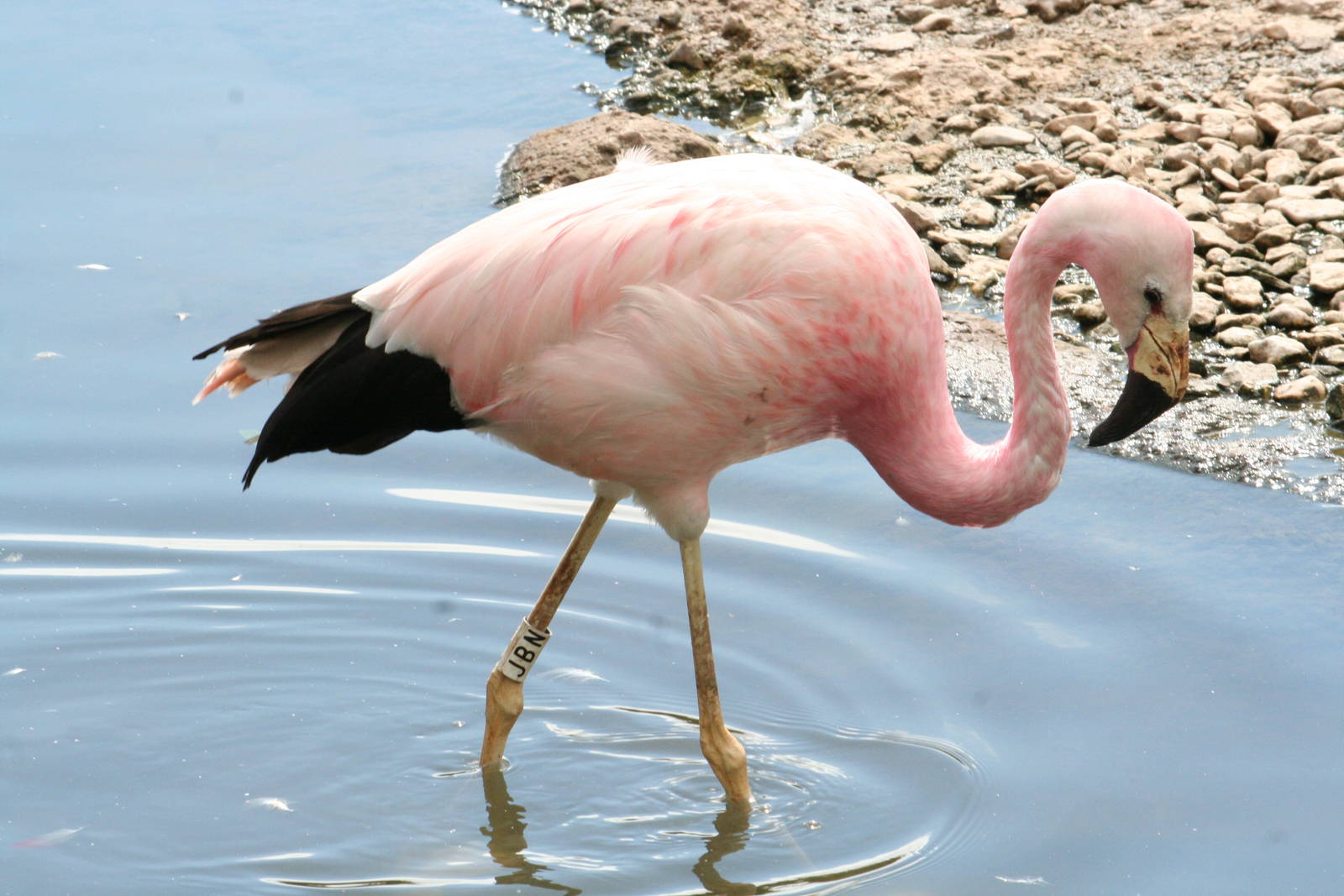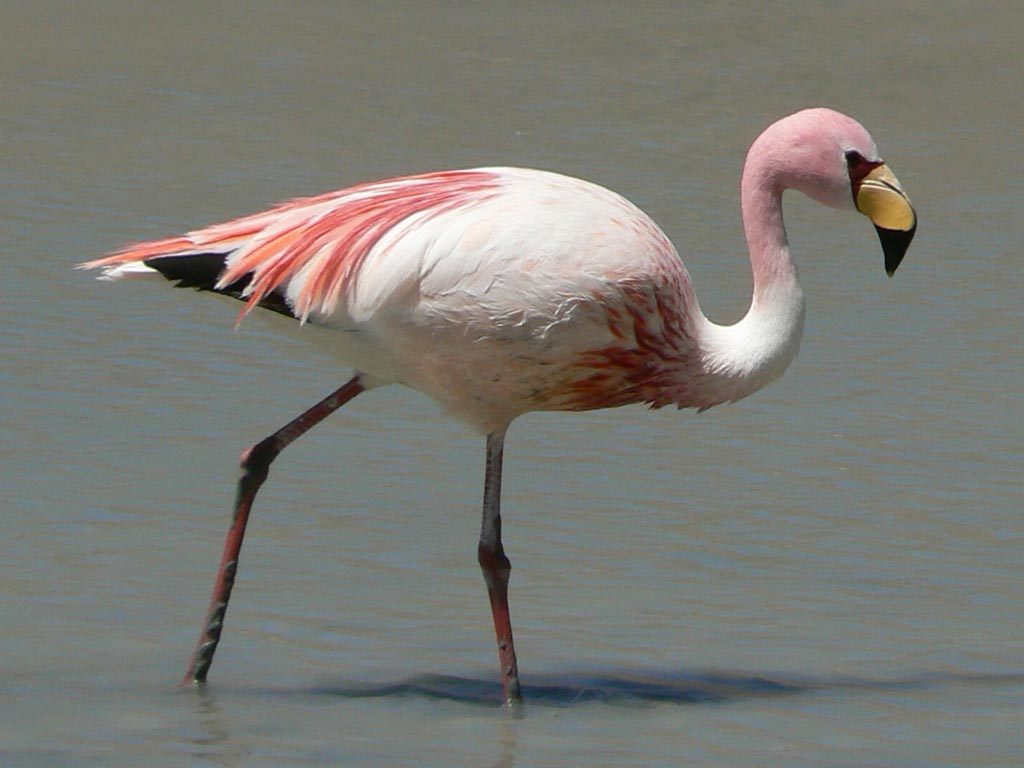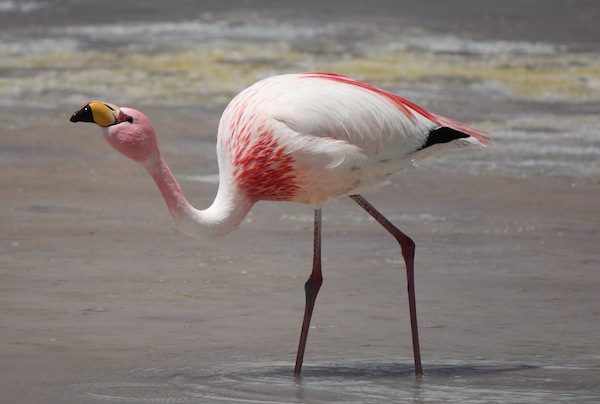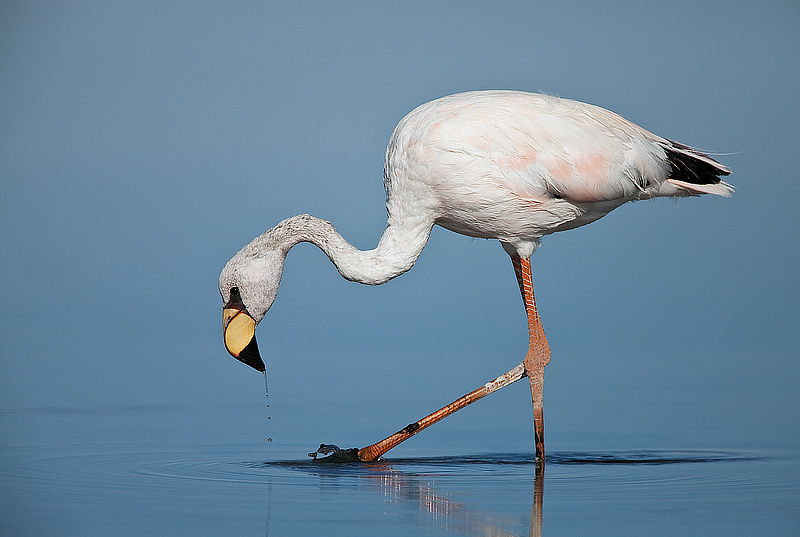
Phoenicoparrus jamesi
TAXONOMY
Phoenicoparrus jamesi P.L. Sclater, 1886, Sitani, at foot of Isluga
volcano, Tarapacб, Chile.
OTHER COMMON NAMES
English: Lesser Andean flamingo, Puna flamingo; French: Flamant
de James; German: Jamesflamingo; Spanish: Parina Chica.
PHYSICAL CHARACTERISTICS
35–26 in (90–92 cm); c. 4.4 lb (2.0 kg); female approximately
10% smaller than male. Adults are overall whitish, tinged with
pink, with a band of carmine streaks across the breast; bright
red on the wings. Flight feathers are black. Bill is yellow, with
red at the base and a broad black tip. Legs and feet are pink.
The juvenile is brownish, streaked darker.
DISTRIBUTION
Found only in the high Andes of the extreme south of western
Bolivia, northern Chile, and northwestern Argentina.
HABITAT
Shallow high-altitude saline and alkaline lakes and lagoons.
BEHAVIOR
Gregarious, with group displays involving ritualized movements
of head and wings, accompanied by loud calls. In flocks
of a few hundred to several thousand.
FEEDING ECOLOGY AND DIET
Sieves diatoms from shallow water and mud.
REPRODUCTIVE BIOLOGY
Lays single egg on mud nest close to or in shallow water, the
time of breeding being dictated by rainfall rather than seasons.
Nests in dense colonies, up to a few thousands of pairs.
Incubation period probably c. 28 days; fledging probably
70–80 days. Both parents incubate and care for young, which
gather into groups. Productivity very variable, with complete
failures in some years. Age of first breeding probably four or
five years.
CONSERVATION STATUS
Has declined in some areas in recent years, through habitat destruction
and egg-harvesting. Recent establishment of reserves
should benefit the species.
SIGNIFICANCE TO HUMANS
Egg-harvesting.
Photo Gallery of - James’ flamingo




 Animalia Life
Animalia Life